
Coachwhip (Coluber flagellum)
Snakes Around Las Vegas, Wildlife Around Las Vegas
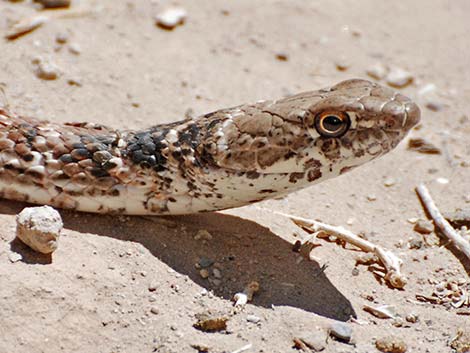 |
General Description: A long, thin, red snake without distinct dorsal marks; head and neck often with black marks. Taxonomy: Colubrid Snakes Family (Colubridae). Formerly Masticophis flagellum. Technical Description: Body long and thin, to 8.5 ft. Eyes large. Scales smooth. Dorsal color usually reddish or pink, grading to tan towards the tail. Head darker; neck black or with black bars. Anal scale divided. No dorsal marks. Scale pattern resembles a braided whip, hence the name. Wedged lower preocular. Scales in 17 rows at midbody. |
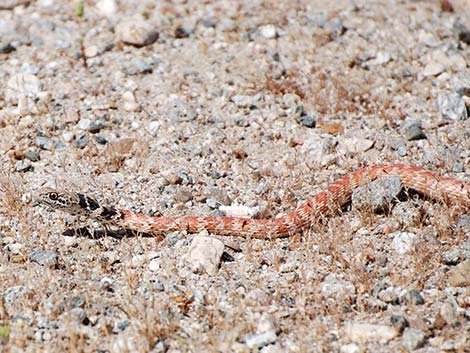 Note the red body with a black head and neck |
Diet: Eats lizards, small mammals, birds, bird eggs, and insects. Sometimes bobs head like a lizard to attract lizards into the strike zone. Habitat: Creosote-Bursage Flats, Mojave Desert Scrub, Pinyon-Juniper Woodlands, farm fields, and grasslands with scattered brush and rocky areas to about 8,000 ft. Prefers open areas. Range: Southern California, southern Nevada, southern Arizona, east; south into Mexico. This subspecies occurs in southern California, southern Nevada, southern Arizona. |
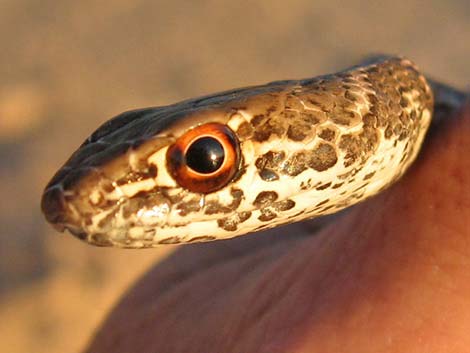 Coachwhips are big-eyed visual predators |
Breeding: Clutch of 4 to 20 eggs laid during summer. Similar Species: There are no other long, thin, red snakes without dorsal marks in southern Nevada. Comments: Diurnal. Very fast. |
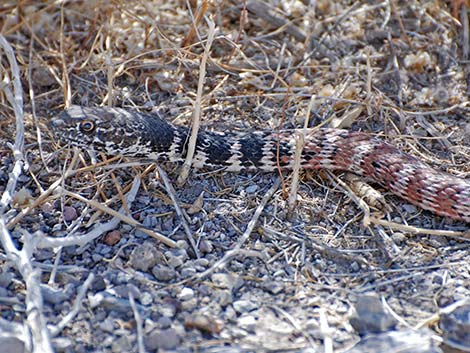 |
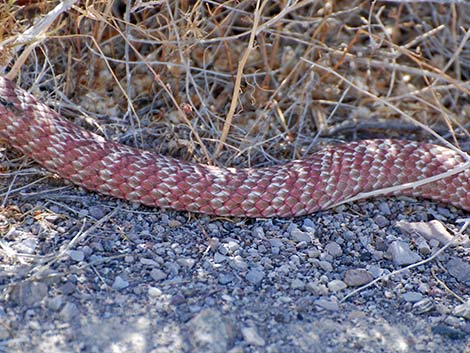 |
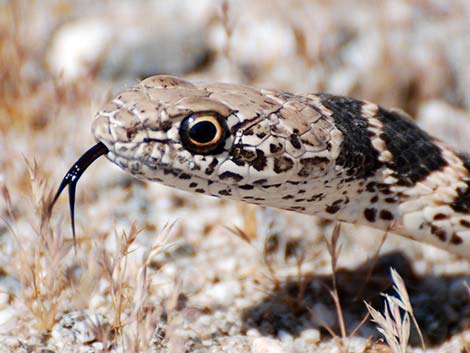 Tasting the air with its forked tongue |
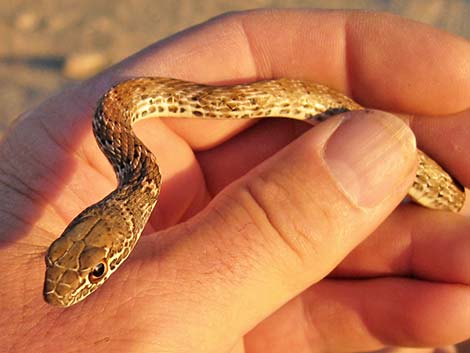 Young Coachwhip |
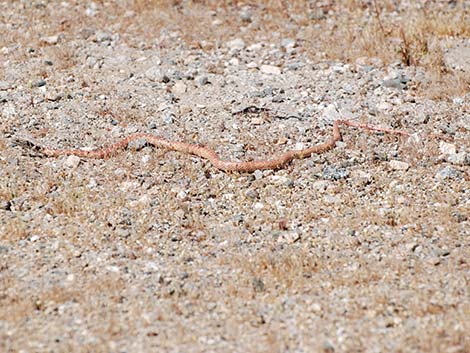 A 5-ft red snake can blend into background and disappear |
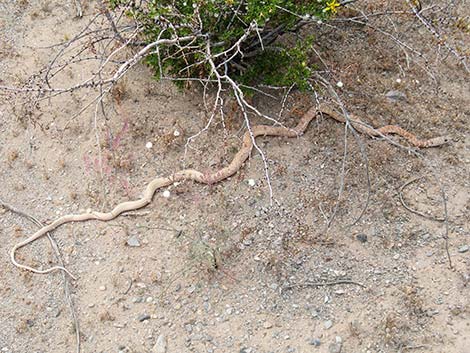 This 5-ft red snake is a little easier to see |
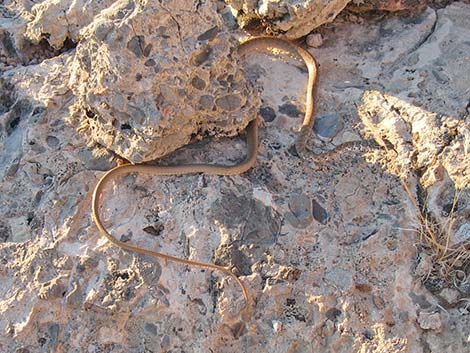 |
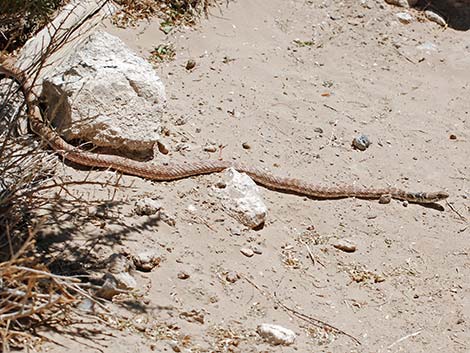 |
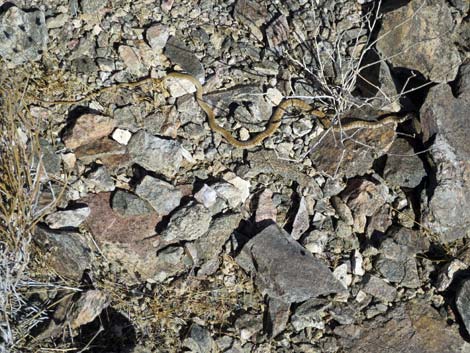 Red Racer in southwestern Gold Butte NM |
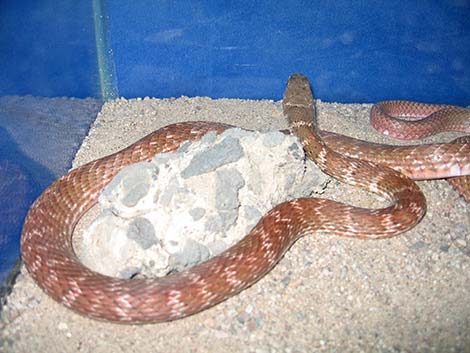 Soon after I took this photo, this snake raced off into the desert |
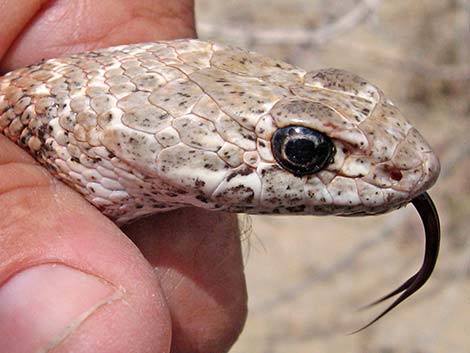 |
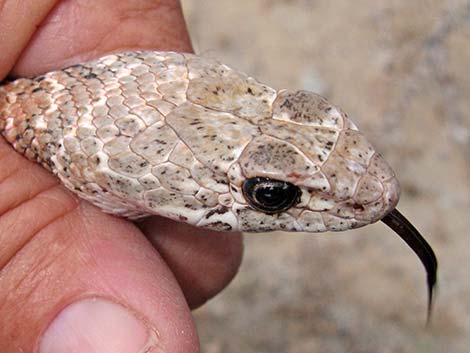 |
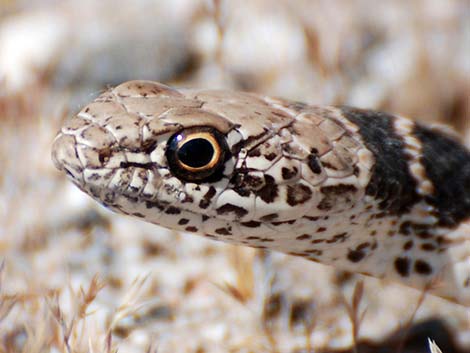 Big-eyed visual predator |
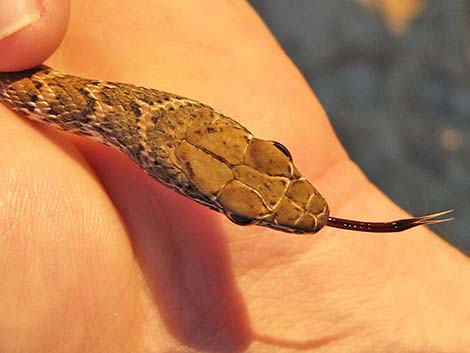 Flicking its tongue |
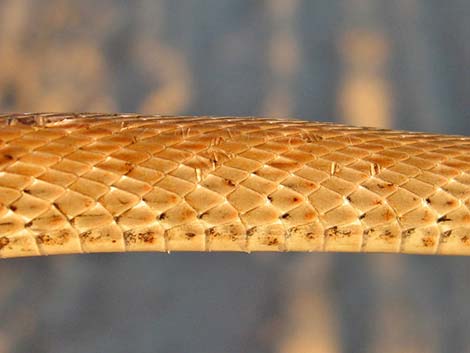 Scale pattern resembles a braided, rawhide coach whip |
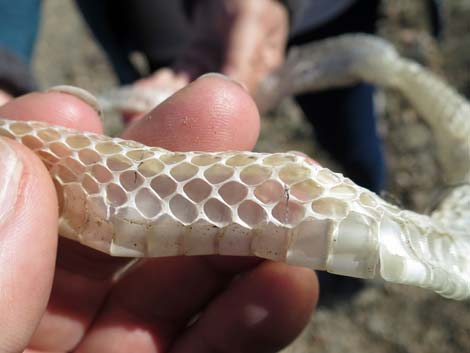 Red Racer shed |
Note: All distances, elevations, and other facts are approximate.
![]() ; Last updated 221207
; Last updated 221207
| Snakes Around Las Vegas | Wildlife Around Las Vegas | Glossary | Copyright, Conditions, Disclaimer | Home |